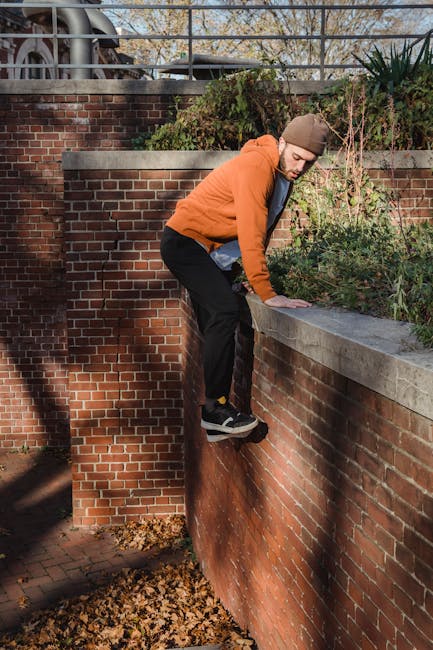Are you tired of feeling like a clumsy caveman trying to play the guitar with your fingers? Do you envy those nimble-fingered maestros who effortlessly pluck and strum their way to musical greatness? Well, fear not, dear reader, for we are here to banish your fingerpicking woes and elevate you from amateur to virtuoso. In this comprehensive guide, we will take you on a journey from the basics of fingerpicking to the pinnacle of brilliance. So grab your guitar, warm up those digits, and get ready to unleash your inner guitar god(dess) – because it’s time to master the art of fingerpicking like never before!
Contents
- 1 Understanding the Fundamentals of Fingerpicking
- 2 Exploring Various Fingerpicking Patterns and Their Applications
- 3 Developing Precision and Speed in Fingerpicking
- 4 Incorporating Fingerpicking Techniques Across Different Music Genres
- 5 Mastering Finger Independence for Complex Pieces
- 6 The Role of Hand Positioning and Ergonomics in Advanced Fingerpicking
- 7 Evolving Your Fingerpicking Style with Personal Expression and Creativity
- 8 FAQs
- 9 Strumming off into the sunset
Understanding the Fundamentals of Fingerpicking
Fingerpicking may seem like a mystical art reserved for guitar gods and wizards, but fear not my fellow guitar enthusiasts! The fundamentals of fingerpicking are not as intimidating as they may seem. With a bit of practice and patience, you too can master this technique and impress all your friends and family.
First things first, let’s talk about finger positioning. No, we’re not talking about doing yoga with your fingers (although that would be quite impressive). When fingerpicking, you’ll generally use your thumb for the bass notes and your index, middle, and ring fingers for the melody and harmony. Think of your fingers as a well-oiled machine working together to create beautiful music.
Next up, let’s discuss fingerpicking patterns. There are a variety of patterns you can use, from the basic Travis picking pattern to the more intricate arpeggios. Experiment with different patterns to see what works best for the song you’re playing. Remember, there’s no right or wrong way to fingerpick, as long as it sounds good to you.
Lastly, practice makes perfect. Rome wasn’t built in a day, and neither is fingerpicking mastery. Set aside some time each day to work on your fingerpicking skills. Trust me, your fingers will thank you later. So grab your guitar, channel your inner fingerpicking ninja, and get ready to rock (or folk, or blues, or whatever genre tickles your fancy)!

Exploring Various Fingerpicking Patterns and Their Applications
Alright, let’s dive into the wild world of fingerpicking patterns! Prepare to be amazed by the endless possibilities and applications of these intricate techniques.
First up, we have the Travis Picking Pattern. Named after the legendary guitarist Merle Travis, this pattern involves alternating bass notes with melody notes to create a complex and dynamic sound. Perfect for folk and country music, mastering this pattern will have you fingerpicking like a pro in no time.
Next on the list is the Thumb and Two-Finger Pattern. As the name suggests, this pattern involves using your thumb and two fingers to pluck the strings simultaneously, creating a rich and full-bodied sound. Ideal for blues and jazz tunes, this pattern will add a touch of sophistication to your fingerpicking repertoire.
And last but not least, we have the Cascade Pattern. This mesmerizing pattern involves playing arpeggios in a cascading motion, creating a waterfall-like effect of notes. Perfect for adding drama and flair to your fingerpicking, the Cascade Pattern is sure to impress listeners and elevate your playing to new heights.

Developing Precision and Speed in Fingerpicking
When it comes to fingerpicking, precision and speed are key factors in mastering this technique. However, achieving both can be quite a challenge. But fear not, with some practice and a few handy tips, you’ll be fingerpicking like a pro in no time!
First things first, let’s talk about building precision in your fingerpicking. One great way to do this is by focusing on your finger placement. Make sure your fingers are hitting the strings with the right amount of force and at the correct angle. Additionally, practicing scales and exercises can help improve your finger dexterity, making it easier to hit the right notes with accuracy.
Now, onto speed. Developing speed in fingerpicking requires practice and patience. One effective way to increase your speed is by starting slow and gradually building up your tempo. Keeping a steady rhythm and staying relaxed are also crucial in developing speed. Remember, Rome wasn’t built in a day, so don’t get discouraged if progress seems slow at first!
So there you have it, a few tips to help you develop precision and speed in your fingerpicking. With dedication and persistence, you’ll be fingerpicking with finesse in no time. Keep practicing, stay focused, and most importantly, have fun with it!

Incorporating Fingerpicking Techniques Across Different Music Genres
Whether you’re into folk, blues, or even heavy metal, fingerpicking techniques can add a whole new dimension to your playing. From intricate melodies to rhythmic patterns, incorporating fingerpicking into your repertoire can take your music to the next level.
One way to start incorporating fingerpicking techniques across different genres is by learning the basics. Get familiar with fingerpicking patterns like the Travis picking technique, where you alternate between plucking the bass notes and picking the melody. Once you’ve mastered the basics, you can start experimenting with different patterns and techniques to create your own unique sound.
Don’t be afraid to mix things up and try fingerpicking in unexpected genres. Imagine adding a touch of fingerstyle to your punk rock anthem or incorporating fingerpicking into your next rap verse. The possibilities are endless, and experimenting with different genres can help you discover new and exciting ways to use fingerpicking in your music.
Remember, practice makes perfect. Keep challenging yourself to learn new techniques and explore different genres to truly master the art of fingerpicking. So grab your guitar, get your fingers moving, and let the magic of fingerpicking take your music to new heights!

Mastering Finger Independence for Complex Pieces
Finger independence is like trying to pat your head while rubbing your stomach – difficult, confusing, and often results in a mess. But fear not, aspiring pianists, for there are ways to master this elusive skill and conquer even the most complex of pieces.
First and foremost, practice, practice, practice! Just like any other muscle, your fingers need exercise to build strength and coordination. Spend time each day working on exercises that specifically target finger independence, such as trills, scales, and arpeggios.
Next, don’t be afraid to get a little creative with your practice routine. Try playing different patterns with each hand, switching up the rhythm or dynamics, or even incorporating unexpected finger movements. The more you challenge your fingers, the quicker they’ll adapt and improve.
And finally, remember to be patient with yourself. Rome wasn’t built in a day, and neither will your finger independence. Celebrate small victories and don’t be discouraged by setbacks. Keep pushing yourself to improve, and soon enough you’ll be tackling those complex pieces with ease and flair.
The Role of Hand Positioning and Ergonomics in Advanced Fingerpicking
When it comes to advanced fingerpicking, hand positioning and ergonomics play a crucial role in mastering the technique. Think of your hands as the tools of the trade, and just like a carpenter needs the right hammer to build a house, a fingerpicker needs the right hand position to create beautiful melodies.
Here are some tips to keep in mind when perfecting your hand positioning:
- Keep your wrist relaxed and in a neutral position. Avoid any unnecessary tension that could lead to fatigue or injury.
- Position your thumb behind the neck of the guitar for stability and control. Think of it as your anchor in the stormy sea of fingerpicking.
- Curve your fingers slightly and use the tips to pluck the strings. This will give you more precision and control over the notes you produce.
And let’s not forget about the importance of ergonomics in the world of fingerpicking. Just like a well-designed office chair can save you from a world of back pain, proper ergonomics can save your hands from unnecessary strain.
So, remember to take breaks, stretch your hands and wrists, and listen to your body. After all, a happy hand is a fingerpicking hand that can create magic on the strings!
Evolving Your Fingerpicking Style with Personal Expression and Creativity
So you’ve mastered the basics of fingerpicking, but now it’s time to take your skills to the next level and really make your playing stand out. One of the best ways to do this is by infusing your own personal expression and creativity into your fingerpicking style. Here are some tips to help you evolve your fingerpicking style and make it uniquely your own:
- Experiment with different rhythms: Don’t be afraid to break away from the traditional fingerpicking patterns and try out new rhythms. Mix it up and see what works best for you.
- Explore different techniques: From percussive slaps to harmonics, there are endless techniques you can incorporate into your fingerpicking style. Experiment with different techniques to add texture and depth to your playing.
- Listen to other fingerpickers: Listen to a variety of fingerpickers to get inspiration and ideas for new ways to approach your playing. You never know what you might discover!
Remember, the key to evolving your fingerpicking style is to have fun and not be afraid to take risks. Don’t be afraid to make mistakes or try something new – that’s how you’ll truly find your own unique voice as a fingerpicker. So go ahead, unleash your creativity, and let your personal expression shine through in your fingerpicking style!
FAQs
How can I improve my fingerpicking technique?
Well, first you need to actually pick up a guitar. No, seriously, practice is key. Start with simple exercises to build up dexterity in your fingers and gradually work your way up to more complex patterns.
What are some common mistakes beginners make in fingerpicking?
Oh, where do I start? One common mistake is using too much force when plucking the strings. Remember, you’re not trying to strum a wild horse here, gentle is the way to go. Another blunder is neglecting proper hand placement. Make sure your fingers are steady and in the right position to avoid sloppy playing.
How important is proper fingerpicking technique in playing guitar?
As important as proper seasoning in cooking. Without it, your playing will be bland and unappetizing. Good fingerpicking technique not only improves the quality of your sound but also allows you to play more complicated pieces with ease.
Is it okay to use a pick when fingerpicking?
Only if you want to be banished to the land of subpar guitarists. Just kidding! It’s totally fine to use a pick if that’s your preference. However, mastering fingerpicking without a pick can open up a whole new world of possibilities in your playing.
How can I stay motivated while practicing fingerpicking techniques?
Reward yourself with chocolate every time you successfully nail a tricky pattern. Or imagine that you’re serenading a crowd of adoring fans on a tropical island. Whatever works for you, just remember that practice makes perfect, and one day you’ll be fingerpicking like a rockstar.
Strumming off into the sunset
And there you have it, dear readers! With these newfound fingerpicking techniques under your belt, you’re bound to be the talk of the town at your next campfire jam session. So go forth, pluck those strings, and dazzle the world with your newfound brilliance (and dexterity)! Remember, practice makes perfect, but a sprinkle of charm and a dash of swagger never hurt either. Happy strumming!



